NCERT Solutions, Question Answer and Mind Map for Class 10 Social Studies Geography Chapter 5, “Minerals and Energy Resources,” is a study material package designed to help students understand the importance and distribution of minerals and energy resources in India.
NCERT Solutions provide detailed explanations and answers to the questions presented in the chapter. The solutions cover all the topics in the chapter, including the types of minerals and energy resources found in India, their distribution, and their uses. They also provide tips on how to answer different types of questions, including short answer, long answer, and multiple-choice questions.
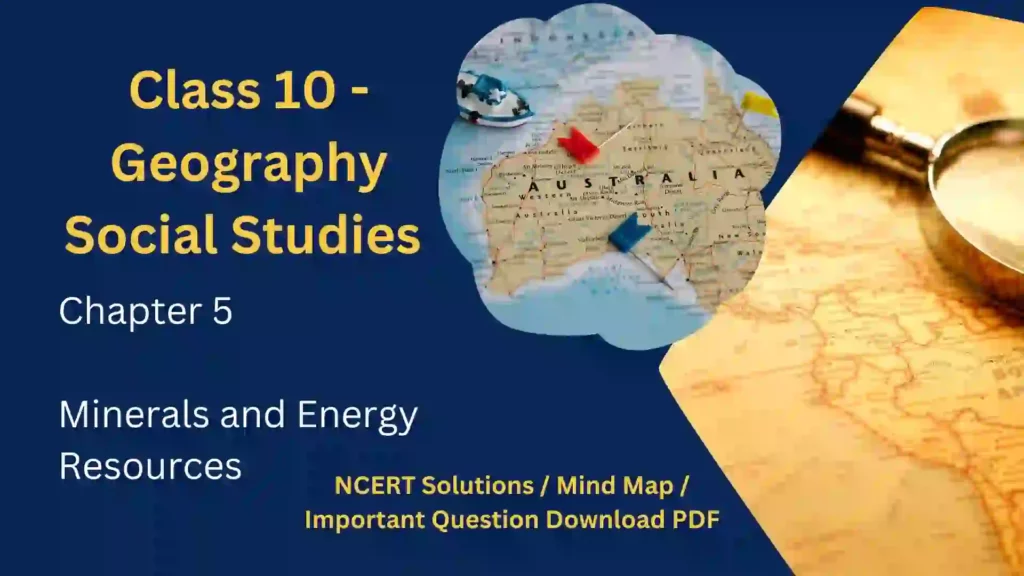
The question-answer section of the chapter covers a wide range of topics, from the location and distribution of minerals and energy resources in India to the impact of their extraction on the environment and the economy. It also includes questions on the different types of minerals, such as metallic and non-metallic minerals, and their uses in various industries.
The mind map provides a visual representation of the key topics covered in the chapter, allowing students to understand the connections between different concepts and ideas. The mind map covers the types of minerals and energy resources found in India, their distribution, and their uses.
NCERT Solutions / Notes Class 10 Social Studies Geography Chapter 5 Minerals and Energy Resources with Mind Map PDF Download
Minerals and Energy Resources
Minerals have become an important part of our lives. From the smallest articles such as pins to the biggest products such as aeroplanes and railways are made of minerals. Most minerals are found in the Earth’s crust.
Occurrence of Minerals
Minerals are naturally occurring, homogeneous substances with a definite chemical composition. Minerals occur in the following forms:
NCERT Solutions for Class 6th SSt
- Chapter 1
- In metamorphic and igneous rocks, minerals are obtained from cracks, faults and joints. The smaller cracks where minerals occur are called veins, while bigger fissures, crevices or joints are called lodes. When minerals in liquid and gaseous forms are forced upwards through cracks and fissures of the rocks, they cool and solidify. Examples: Copper, zinc, tin, lead
- Minerals occur in the layers of sedimentary rocks. They are formed as a result of deposition and concentration in horizontal layers under extreme heat and pressure. Examples: Coal and iron ore. Minerals such as sodium salt and gypsum are formed as a result of evaporation in dry regions.
- When the surface of the rocks decomposes, weathered materials are left behind resulting in the formation of minerals. Example: Bauxite
- Some minerals occur as alluvial deposits at the base of hills or on the valley floor. Examples: Gold, silver, platinum
- Many minerals are found in the oceans. Examples: Magnesium, bromine, common salt India is rich in minerals, and varieties of minerals are found here.
Types of Minerals
There are ferrous, non-ferrous, metallic and non-metallic minerals. Ferrous minerals contain iron and have a tendency to corrode. Non-ferrous minerals do not contain iron, are not magnetic and are resistant to corrosion.
Differences between metallic and non-metallic minerals:
| Metallic Minerals | Non-metallic Minerals |
| Metallic minerals contain metal in raw form. | Non-metallic minerals do not contain metals. |
| These metals are associated with igneous rocks. | These metals are associated with sedimentary rocks. |
| They are usually hard and have a shine of their own. | They are not usually hard and have no shine of their own. |
| Examples: Iron, copper, bauxite, tin | Examples: Salt, coal, mica, clay |
Metallic minerals
Metallic minerals are composed of metals in their original form and possess a very crystalline atomic arrangement. Metallic minerals are composed of ferrous minerals and non-ferrous minerals.
Ferrous Minerals: Metallic minerals containing iron are called ferrous minerals and they are generally hard and sturdy. They are mainly found in solid form except for Hg(mercury).
Non-Ferrous Minerals: These minerals, which include copper, bauxite, lead, zinc and gold play a vital role in a number of metallurgical, engineering and electrical industries. Let us study the distribution of copper and bauxite.
Non-Metallic minerals
Nonmetallic minerals are a special group of chemical elements from which no new product can be generated if they are melted. Nonmetallic minerals are, for example, sand, gravel, limestone, clay, and marble.
Major Minerals and their Occurrence in India
| Names of Minerals | Properties | Importance | Occurrence |
| Iron Ore | Ferrous, heavy metal | Magnetite is of the finest quality. It is used in electrical industries.Hematite ore is the most important industrial iron ore. | Odisha–Jharkhand BeltDurg–Bastar–Chandrapur belt in Chhattisgarh and MaharashtraBellary–Chitradurga– Chikmaglur–Tumkur belt in Karnataka |
| Manganese | Ferrous mineral | It is used in the manufacturing of steel and ferro-manganese alloy. It is also used in the manufacturing of bleaching powder, insecticides and paints. | Odisha is the largest producer of manganese ore in India. |
| Copper | Non-ferrous mineral, ductile and good conductor of electricity | It is used in electrical cables, electronics and chemical industries. | Balaghat mines in Madhya Pradesh, Khetri Mines in Rajasthan and Singbhum district of Jharkhand |
| Bauxite | Non-ferrous mineral; aluminium is obtained from it. | Aluminium obtained from bauxite is used largely in the aviation industry and automobile industry. | Odisha is the largest producer of bauxite in India. Panchpatmali deposits are the most importantbauxite deposits in the state. |
| Mica | Non-metallic mineral; resistant to high voltage. | It is used in the electric and electronic industry. | Koderma–Gaya–Hazaribagh belt of Jharkhand, Northern Chota Nagpur Plateau, areas around Ajmer, Nellore in Andhra Pradesh |
Energy Resources – Conventional and Non-Conventional
Conventional Energy Resources: Conventional sources of energy are the natural energy resources which are present in a limited quantity and are being used for a long time. They are called non-renewable sources as once they are depleted, they cannot be generated at the speed which can sustain its consumption rate. Major conventional sources of energy are:
Coal
- Coal is a major source of energy in India. It is formed as a result of compression of plant material over millions of years.
- Anthracite is the finest quality of coal. Bituminous coal is used for commercial purposes. High-quality bituminous coal is used in blast furnaces for smelting iron. Lignite is an inferior quality of coal which has high moisture content.
- In India, coal occurs in the Damodar Valley in West Bengal and Jharkhand, Jharia, Raniganj and Bokaro. Godavari, Mahanadi, Son and Wardha valleys also contain coal deposits. Because coal loses weight, heavy industries and thermal power stations are located close to coal fields.
Petroleum
- It is another major source of energy in India. It is used for heat and lighting, lubricants for machinery and as raw material for many manufacturing industries.
- Petroleum is found in the fault traps between porous and non-porous rocks. Gas occurs above the oil.
- Mumbai High, Gujarat and Assam are important petroleum-producing regions in the country. Ankleshwar in Gujarat, and Digboi and Naharkatiya are important oil fields in Assam.
Natural Gas
- It is an environment-friendly source as it emits carbon dioxide in low quantities. It may occur with or without petroleum. It is used as raw material in petrochemical industries and as a source of energy.
- The Krishna-Godavari Basin has large reserves of natural gas. Mumbai High, Gulf of Khambhat and the Andaman and Nicobar Islands also have large reserves of natural gas.
Electricity produced by using coal, petroleum and natural gas is known as thermal electricity. Electricity produced by using fast-flowing water is known as hydroelectricity.
Non-Conventional Energy Resources: Renewable energy sources, often known as non-conventional energy, are sources that are renewed by natural processes on a continual basis.
Nuclear Energy
- It is produced by altering the atoms in an atomic reactor.

- Uranium and thorium used for the production of nuclear energy are found in Jharkhand, Aravalli ranges of Rajasthan and Monazite sands of Kerala.
- Nuclear energy comes from splitting atoms in a reactor to heat water into steam, turn a turbine and generate electricity. 93 nuclear reactors in 28 states generate nearly 20 percent of the nation’s electricity, all without carbon emissions because reactors use uranium, not fossil fuels.
Solar Energy
- Because India is a tropical country, there are immense possibilities to harness solar energy. Solar plants are being set up in various parts of the country.
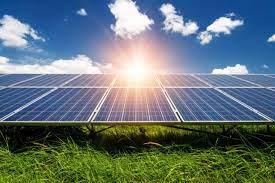
- Various residential apartments have also installed solar cell panels on their roofs for generating electricity.
- Solar energy is the radiation from the Sun capable of producing heat, causing chemical reactions, or generating electricity. The total amount of solar energy received on Earth is vastly more than the world’s current and anticipated energy requirements.
Wind Power
- Windmills are used for generating electricity. India has a great potential of becoming a wind power.
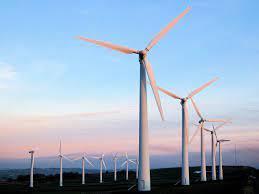
- Windmills are located from Nagercoil to Madurai in Tamil Nadu. Gujarat, Andhra Pradesh, Kerala, Maharashtra and Lakshadweep Islands have important wind farms.
- Nagercoil and Jaisalmer have made effective use of wind energy.
- wind power, form of energy conversion in which turbines convert the kinetic energy of wind into mechanical or electrical energy that can be used for power.
Biogas
- Farm wastes, shrubs and animal wastes are used to produce biogas. Biogas is used for the production of electricity.
- Many biogas plants have been set up at municipal and village levels. Many plants use cattle dung to produce electricity.
NCERT Solutions for Class 6th SSt
- Chapter 1
Tidal Energy
- When energy of the oceanic tides is used for the generation of electricity, it is known as tidal energy.
- Floodgates are built across inlets. When water flows in during high tides, it gets trapped. After the gated are closed, this water goes back to the sea through pipes passing through power-generating turbines.
- Gulf of Khambhat and Gulf of Kutch in Gujarat and the Gangetic delta in the Sundarban region in West Bengal can be used for the generation of electricity.
Geothermal Energy
- When heat emanating from the interior of the Earth is used for the generation of electricity, it is called geothermal energy.
- When groundwater under the surface of the Earth becomes hot because of the existence of high temperature, hot water rises on the surface of the Earth in the form of steam. This steam is then used to generate electricity.
- Two geothermal projects have been started in India-one in Manikarn in Himachal Pradesh and the other in Puga Valley in Ladakh.
Differences between Conventional and Non-conventional Sources of energy
| Conventional Sources Non-conventional Sources | |
| Conventional sources of energy such as coal, petroleum and natural gas are non- renewable sources of energy. | Non-conventional sources of energy such as solar and wind energy are renewable sources of energy. |
| They have been in use since a long time. Examples: Firewood, coal | These sources have been recently developed and are still developing. Example: Technology for producing electricity from solar panels |
| Most of these energy sources cause pollution when used. Examples: Firewood, coal, petrol | They do not cause any pollution. Examples: Solar energy, geothermal energy |
| They are common and widely used sources. Example: Thermal power | They are comparatively new sources of energy and hence are not widely used. Examples: Solar panels, windmills |
Conservation of Minerals
- Conservation of mineral resources is essential because they are a country’s valuable possession. They are used as raw materials in many industries and help in the economic development of a nation. Some methods by which we can conserve minerals are
- Minerals should be used in a planned and sustainable manner.
- Technology should be upgraded to allow the use of low-grade ore at low costs.
- Recycling of metals also results in the conservation of mineral resources.
- Non-conventional sources of energy should be harnessed for the generation of electricity.
- Small steps should be taken by every individual such as using public transport, car pooling and switching off lights and fans when not in use. Using power-saving devices also go a long way in conserving minerals and energy resources.

India: Major Soil Types
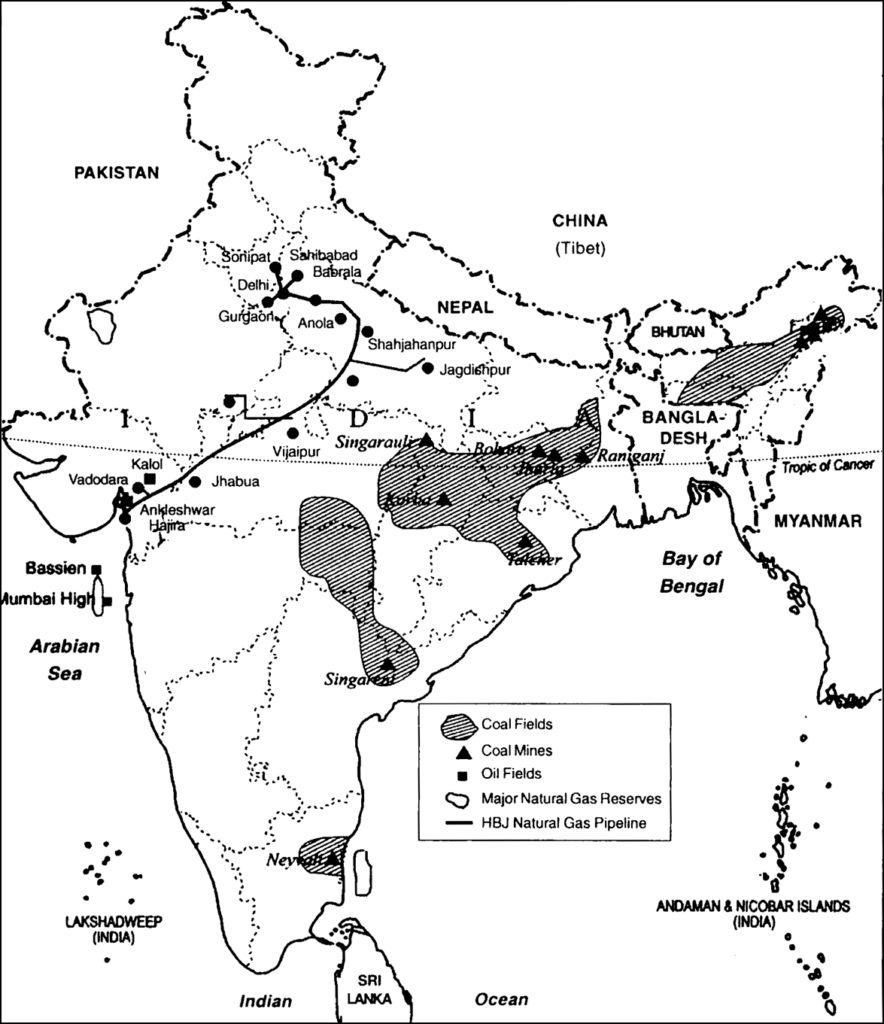
India: Distribution of Coal, Oil and Natural Gas
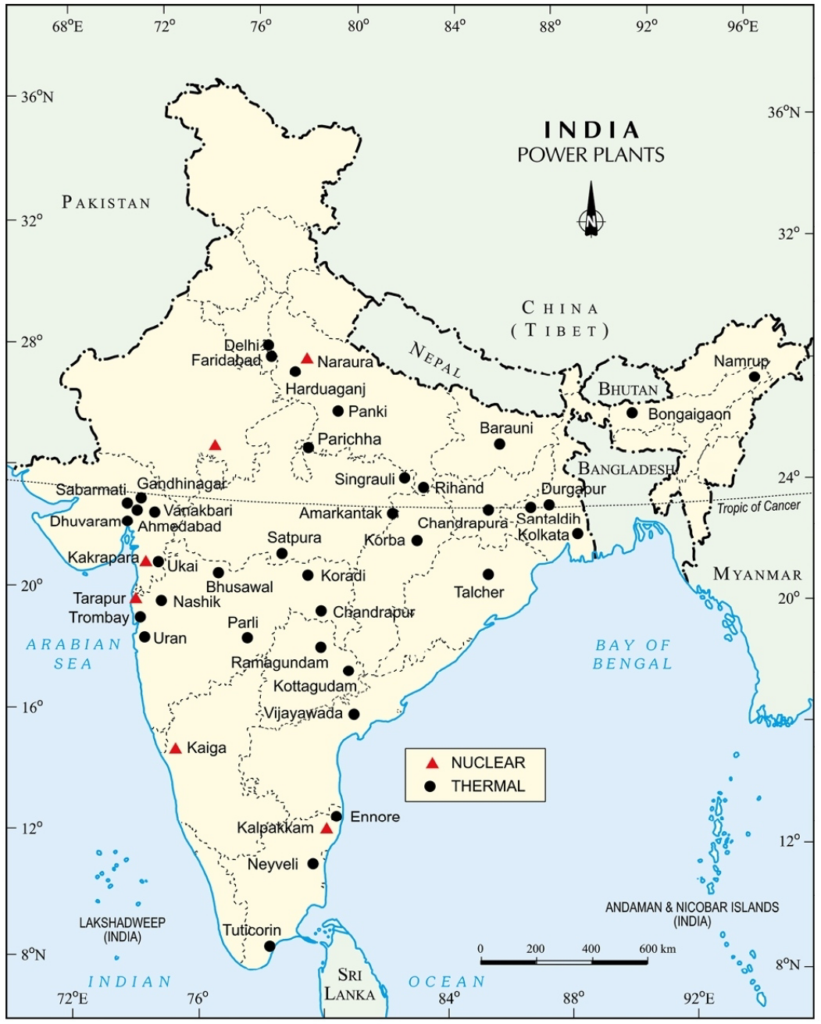
India: Distribution of Nuclear and Thermal Power Plants
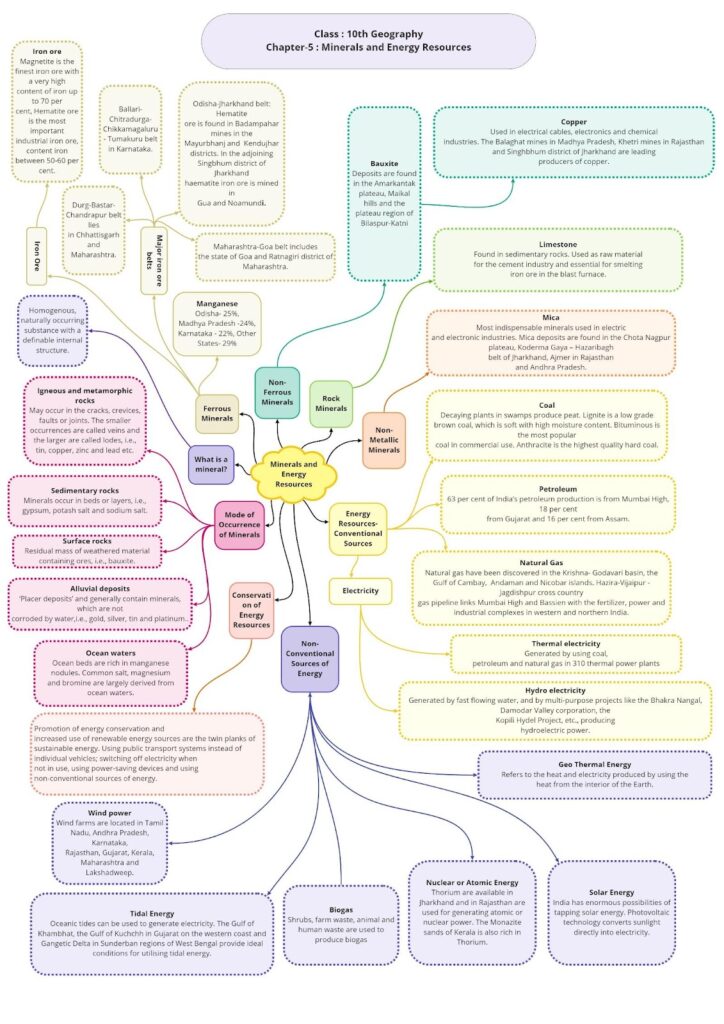
Important Questions
Multiple Choice Questions-
Question 1. The mineral used in the manufacture of steel is:
(a) Copper
(b) Lead
(c) Magnesium
(d) Manganese
Question 2. The state which is the largest producer of manganese is:
(a) Gujarat
(b) West Bengal
(c) Bihar
(d) Orissa
Question 3. The ……………………. mines of Madhya Pradesh produce 52 percent of India’s copper.
(a) Kolaghat
(b) Khetri
(c) Balaghat
(d) Singbhum
Question 4. The most important bauxite deposits in the state of Orissa are in ……………………… district.
(a) Singbhum
(b) Khetri
(c) Balaghat
(d) Koraput
Question 5. The mineral made up of a series of plates or leaves in:
(a) Bauxite
(b) Lead
(c) Copper
(d) Mica
Question 6. Nellore mica belt is in the state of:
(a) Orrisa
(b) Bihar
(c) Madhya Pradesh
(d) Andhra Pradesh
Question 7. The basic raw material for the cement industry and essential for smelting iron ore in the blast furnace is:
(a) Iron
(b) Mica
(c) Limestone
(d) Sodium chloride
Question 8. Low grade brown coal is known as:
(а) Bituminous
(b) Anthracite
(c) Lignite
(d) None of the above
Question 9. The highest quality hard coal is:
(a) Bituminous
(b) Anthracite
(c) Lignite
(d) None of the above
Question 10. Tertiary coals occur in which of the following:
(a) Orissa, West Bengal and Bihar
(b) Punjab, Haryana, Jammu and Kashmir
(c) Meghalaya, Assam, Arunachal Pradesh and Nagaland
(d) Gujarat, Kerala, Tamil Nadu and Karnataka
Question 11. About ………………… percent of India’s petroleum production is from Mumbai High.
(a) 63
(b) 73
(c) 83
(d) 93
Question 12. Large reserves of natural gas have been discovered in the:
(a) Ganga – Godavari Basin
(b) Ganga – Yamuna Basi
(c) Ganga – Brahmaputra Basin
(d) Krishna – Godavari Basin
Question 13. The number of thermal power plants in India is:
(a) 110
(b) 210
(c) 310
(d) 410
Question 14. Nuclear energy is obtained by altering the:
(a) Structure of atoms
(b) Structure of electrons
(c) Structure of protons
(d) None of the above
Question 15. The largest solar plant of India is located at:
(a) Madhapur
(b) Khetri
(c) Kolhapur
(d) Jaisalmer
NCERT Solutions for Class 6th SSt
- Chapter 1
Very Short-
Question 1. State some products/things we use that are made of metals.
Question 2. Name the minerals which do the cleaning work.
Question 3. Which rock consists of single mineral only ? [CBSE 2015]
Question 4. What is a mineral ?
Question 5. How do Geographers study minerals ?
Question 6. What is the interest of a geologists in minerals ?
Question 7. State some of the non-metallic minerals.
Question 8. Give some examples of energy minerals.
Question 9. What type of mineral is copper ?
Question 10. Where are minerals found ?
Short Questions-
1. How minerals are formed in sedimentary rocks? Name any two mineral formed due to evaporation especially in arid region.
2. Explain with an example that aluminum was widely used by the emperors of France.
3. Name any one rock mineral. Write about its formation. Name the industry in which it is used?
4. Can you illustrate some suggestions to conserve minerals?
5. Study the given chart carefully and answer the following questions:
A. Which state is the largest producer of manganese in India?
B. What is the use of manganese?
C. What is the share of Madhya Pradesh in the production of manganese ore?

6. Toothpaste is a combination of various Minerals”. Support the statement with suitable examples.
7. What is the difference in approach of Geographers and Geologists in the study of mineral resources?
8. Distinguish between metallic Minerals and Non Metallic Minerals.
9. How do decomposition and weathering influence formation of minerals? Name a mineral formed due to decomposition and weathering?
10. What is the contribution of coal in the installed capacity of electricity? Why is the share of coal continuing to be highest?
Long Questions-
1. What are Non-Conventional Sources of Energy? Why do they have a bright future in India.
2. Write a short note on Bauxite, its formation, features and distribution in India.
3. Why there is a need of conservation of minerals?
4. How would you classify the types of coal depending on the degrees of compression?
5. Name the non metallic mineral, which can be easily splits into thin sheets. What are the properties of this mineral and it is found in which areas?
6. Explain the different forms of occurrence of minerals.
7. Distinguish between conventional and non conventional sources of energy.
8. Explain any five types of non-conventional sources of energy developed in India.
Assertion and Reason Questions:
1. In these questions, a statement of assertion followed by a statement of reason is given. Choose the correct answer out of the following choices.
- Assertion and reason both are correct statements and reason is correct explanation for assertion.
- Assertion and reason both are correct statements but reason is not correct explanation for assertion.
- Assertion is correct statement, but reason is wrong statement.
- Both assertion and reason are wrong statements.
Assertion (A): Uses of iron brought a radical change in human life.
Reason (R): Different kinds of tools where invented by using minerals.
1.
2. In these questions, a statement of assertion followed by a statement of reason is given. Choose the correct answer out of the following choices.
- Assertion and reason both are correct statements and reason is correct explanation for assertion.
- Assertion and reason both are correct statements but reason is not correct explanation for assertion.
- Assertion is correct statement but reason is wrong statement.
- Both assertion and reason are wrong statements.
Assertion (A): Mining activity is often called a “Killer Industry”.
Reason (R): Mining helps in agriculture.
Assertion and Reason Answers:
Cash Study Questions:
- Energy is required for all activities. It is needed to cook, to provide light and heat, to propel vehicles and to drive machinery in industries. Energy can be generated from fuel minerals like coal, petroleum, natural gas, uranium, and electricity. Energy resources can be classified as conventional and non-conventional sources. Conventional sources include firewood, cattle dung cake, coal, petroleum, natural gas, and electricity (both hydel and thermal). Non-conventional sources include solar, wind, tidal, geothermal, biogas, and atomic energy. Firewood and cattle dung cake is most common in rural India. According to one estimate, more than 70 percent of energy requirement in rural households is met by these two; continuation of these is increasingly becoming difficult due to decreasing forest area. Moreover, using dung cake too is being discouraged because it consumes most valuable manure which could be used in agriculture.
- Which of the following statement is true about conventional energy resources?
(a) They cause minimum pollution.
(b) They are available in limited quantity.
(c) Cattle dung is the most used energy in the world.
(d) There are sufficient reserves of conventional energy sources.
- Which of the following resources does not generate energy?
(a) Coal
(b) Fuel
(c) Natural gas
(d) None of the above
- Which of the following energy is the non-conventional source of energy?
(a) Firewood
(b) Tidal energy
(c) Natural gas
(d) Petroleum
- Firewood and cattle dung cake are most common energy in rural India because
(a) They are easily available
(b) They are non-conventional
(c) They produces high energy
(d) None of the above
- How India can reduce its dependence over countries for energy?
(a) Promoting non-conventional source of energy
(b) Promoting efficient use of resources
(c) Both (a) and (b)
(d) None of the above
Map Question:
- On an outline map of India, locate and label the following power plants with appropriate symbols:
- Thermal: Namrup, Talcher, Singrauli, Harduaganj, Korba, Uran, Ramagundam, Vijayawada, Tuticorin.
- Nuclear: Narora, Rawat Bhata, Kakrapara, Tarapur, Kaiga, Kalpakkam
MCQ Answers-
- Answer: (d) Manganese
- Answer: (d) Orissa
- Answer: (c) Balaghat
- Answer: (d) Koraput
- Answer: (d) Mica
- Answer: (d) Andhra Pradesh
- Answer: (c) Limestone
- Answer: (c) Lignite
- Answer: (b) Anthracite
- Answer: (c) Meghalaya, Assam, Arunachal Pradesh and Nagaland
- Answer: (a) 63
- Answer: (d) Krishna – Godavari Basin
- Answer: (c) 310
- Answer: (a) Structure of atoms
- Answer: (a) Madhapur
Very Short Answers-
- Answer: Railway lines, a tiny pin, machinery, cars etc. are all made of metals.
- Answer: Silica, oxide and phosphate minerals do the cleaning work.
- Answer: Limestone.
- Answer: Mineral is a “homogenous” naturally occurring substance with a definable internal structure.
- Answer: Geographers study minerals as part of the earth’s crust for a better understanding of landforms.
- Answer: A geologist is interested in the formation of minerals, their age and physical and chemical composition.
- Answer: Non-metallic minerals are mica, salt, potash, sulphur, granite, limestone, marble sand stone etc.
- Answer: Coal, petroleum and natural gas are energy minerals.
- Answer: Copper is a metallic mineral.
- Answer: Minerals are found in ores.
Short Answers-
1. Ans.
A. In sedimentary rocks a number of minerals occur in beds and layers.
B. They have been formed as a result of deposition, accumulation and concentration in horizontal strata.
C. Coal and some forms of iron ore have been concentrated as a result of long periods under great heat and pressure.
D. Another group of sedimentary minerals include gypsum, potash salt and sodium salt. These are formed as a result of evaporation especially in arid region.
2. Ans.
A. After the discovery of aluminium Emperor Napoleon III wore buttons and hooks on his clothes made of aluminium.
B. Food was served to his more illustrious guests in aluminium utensils and the less honorable ones were served in gold and silver utensils.
C. Thirty years after this incident aluminium bowls were most common with the beggars in Paris.
3. Ans.
A. Limestone is a rock mineral.
B. It is found in association with rocks composed of calcium carbonate or calcium and magnesium carbonates.
C. It is found in sedimentary rocks of most geological formations.
D. Limestone is the basic raw material for cement industry and essential for smelting iron ore in the blast furnaces.
4. Ans.
A. A concerted effort has to be made in order to use our mineral resources in a planned and sustainable manner.
B. Improved technologies need to be constantly evolved to allow use of low grade ores at low costs.
C. Recycling of metals, using scrap metals and other substitutes are steps in conserving our minerals resources for future.
5. Ans.
A. Odisha is the largest producer of manganese ore in India.
B. Manganese is mainly used in the manufacture of steel.
C. About 22%.
6. Ans. Yes, toothpaste is a combination of so many minerals. Toothpaste cleans our teeth. Abrasive minerals like silica, limestone, aluminum oxide and various phosphate minerals do the cleaning. Fluoride which is used to reduce cavities, come from a mineral fluoride. Most toothpaste is made white, with titanium oxide, which comes from minerals called rutile, ilmenite and anatase. The sparkle in some toothpaste comes from mica. The toothbrush and tube containing the paste are made of plastics from petroleum.
7. Ans. Geographers study minerals as part of the earth’s crust for a better understanding of land reforms. The Distribution of minerals resources and associated economic activities are interest to geographers.
Geologists, however, is interested in the formation of minerals, their age and physical and chemical composition.
8. Ans. Metallic Minerals
1. Minerals from which metals are extracted.
2. They can be pressed in to wires or sheets.
3. Iron gold silver are metallic minerals
Non-Metallic Minerals
1. Minerals consist of non-metals.
2. They cannot be pressed in to wires or sheets
3. Clay, Sulphur, coal, potash are all non metallic minerals.
9. Ans.
A. This type of formation involves the decomposition of surface rocks under the effect of pressure, temperature and humidity.
B. Due to weathering effects of wind and water the soluble constituents, leaving a residual mass of weathered material containing ores.
C. Bauxite is formed this way.
10. Ans.
A. 62% is the contribution of coal in the installed capacity of electricity.
B. The share of coal is continuing to be highest because of the following facts.
1. India has a huge resource of coal of different kinds, such as anthracite, bituminous, lignite and peat.
2. The potential of India in the field of hydel power is quite high but only one sixth has been derived developed.
3. Electricity produced by nuclear plants is only in the initial stages. This way is not properly developed.
Long Answers-
1. Ans. Resources which we can use again and again and which are renewable in nature are non-conventional resources of energy. Due to the following reasons they have bright future in India.
Resources which we can use again and again and which are renewable in nature are non-conventional resources of energy. Due to the following reasons they have bright future in India.
A. India is blessed with an abundance of sunlight, water, wind and bio mass.
B. India is tropical country. It has enormous possibilities of tapping solar energy.
C. India now ranks a wind super power in the world. States like Tamil Nadu, Andhra Pradesh, Karnataka, Gujarat, Kerala, Maharashtra, and Lakshadweep have important wind farms
D. In India the Gulf of Kichchh, provides ideal conditions for utilizing tidal energy.
E. There are several hundred hot spot springs in India, which could be uded to generate Geo Thermal Energy.
2. Ans. Bauxite is a clay-like substance from which alumina and later aluminium is obtained. Aluminium is an important metal because it combines the strength of metals such as iron, with extreme lightness and also with good conductivity and great malleable ability.
Formation: Bauxite deposits are formed by the decomposition of a wide variety of rocks rich in aluminium silicates.
Distribution:
A. It is found in the Amarkantak Plateau, Maikal Hills and the plateau region of Bilaspur-Katni.
B. Odisha is the largest bauxite producing state in India.
C. Panchpatmali deposits in Koraput District are the most important bauxite deposits in the state.
D. 45% of the country’s total production in 2000-01 was in Odisha.
3. Ans.
A. The total Volume of workable mineral deposits in an insignificant fraction i.e. one percent of the earth’s crust.
B. We are rapidly consuming mineral resources that required millions of years to be created and concentrated.
C. The geological processes of mineral formation are so slow that the rates of replenishment are infinitely small in comparison to the present rates of consumption.
D. Mineral resources are finite and non renewable.
E. Mining of minerals causes great threat to the environment and health of the human beings.Due to the above discussed reasons it is necessary to conserve the minerals and use them in a judicious way.
4. Ans. Following are the types of coal on the degree of compression:
A. Peat: Decaying plants in swamps produced peat, which has a low carbon and high moisture contents. It has very heating capacity.
B. Lignite: Lignite is a low grade brown coal, which is soft with high moisture content. The principal lignite reserves are in Neyveli in Tamil Nadu and used for generation of electricity.
C. Bituminous: Coal that has been buried deep and subjected to increased temperature is bituminous coal. It is the most popular coal in commercial use. Metallurgical coal is high grade bituminous coal which has a special value foe smelting iron in blast furnace.
D. Anthracite: It is highest quality hard coal.
5. Ans. Mica is the mineral made up of a series of plates or leaves. It splits easily into thin sheets.
Properties:
A. Mica sheets can be so thin that a thousand can be layered in to mica sheet of a few centimeters high.
B. Mica can be clear, black, green, red, yellow or brown, Due to its excellent di-electric strength, low power loss factor, insulating properties and resistance to high voltage, mica is one of the most indispensable minerals used in electric and electronic industries.
Mica producing areas:
A. Mica is found in the northern edge of the Chota Nagpur Plateau. Koderma Gaya- Hazaribhag belt of Jharkhand is the leading producers.
B. In Rajasthan the major mica producing area is around Ajmer.
C. Nellore mica belt of Andhra Pradesh is also an important producer in the country.
6. Ans.
NCERT Solutions for Class 6th SSt
- Chapter 1
A. Occurrence of Minerals in Igneous and Metamorphic rocks: In igneous and metamorphic rocks minerals may occur in cracks, crevices, faults and joints. The smaller occurrence is called veins and the larger are called lodes. Major metallic minerals like tin, copper, zinc and lead etc are obtained from veins and lodes.
B. Occurrence of minerals in sedimentary rocks: In sedimentary rocks a number of minerals occur in beds and layers. They have been formed as a result of deposition, accumulation and concentration in horizontal strata. Coal and some forms of iron ore have been concentrated as a result of long periods.
C. Occurrence of minerals through Decomposition of surface rocks: Another mode of formation involves the decomposition of surface rocks, and the removal of soluble constituents, leaving a residual mass of weathered material containing ores. Bauxite is formed this way.
D. Alluvial deposits: Certain minerals may occur as alluvial deposits in sands of valley floors and the base of hills. These deposits are called placer deposits.
E. Minerals in ocean water and ocean beds: The ocean water contains vast quantities of minerals. Common salt, magnesium and bromine are largely derived from ocean water. The ocean beds too are rich in manganese nodules
7. Ans.
| Conventional | Non- Conventional |
| 1. Conventional sources of energy are non renewable sources of energy. | 1. Non-conventional sources of energy are renewable sources of energy. |
| 2. These sources get depleted with its use. | 2. These resources can be used again and again. |
| 3. These are traditional sources of energy. | 3. These are recently developed sources of energy. |
| 4. These causes large scale pollution. | 4. These are environment friendly resources. |
| 5. For example : Coal, petroleum, diesel, etc. | 5. For example: Solar energy, wind energy, tidal energy etc. |
8. Ans.
A. Solar energy: India is a tropical country. It has enormous possibilities of tapping solar energy. Photovoltaic technology converts sunlight directly into electricity. Solar energy is fast becoming popular in rural and remote areas. The largest solar plant of India is located at Madhapur, near Bhuj, where solar energy is used to sterilize milk cans.
B. Wind power: India now ranks as a wind super power in the world. The largest wind farm cluster is located in Tamil Nadu from Nagarcoil to Madurai.
C. Bio Gas: Shrubs, farm waste, animal and human waste are used to produce bio gas for domestic purpose in rural area. Decomposition of organic matter yields gas, which has higher thermal efficiency in comparison to kerosene, dung cake and charcoal.
D. Tidal energy: Oceanic tides can be used to generate electricity. Floodgate dams are built across inlet. During high tide water flows into the inlet and gets trapped when the gate is closed. From that stored water electricity is generated.
E. Geo thermal Energy: Geothermal energy refers to the heat and electricity produced by using the heat from the interior of the earth
Case Study Answer:
- i (b) They are available in limited quantity.
ii (d) None of the above.
iii (b) Tidal energy
iv (a) They are easily available
v (c) Both (a) and (b)
Map answer:
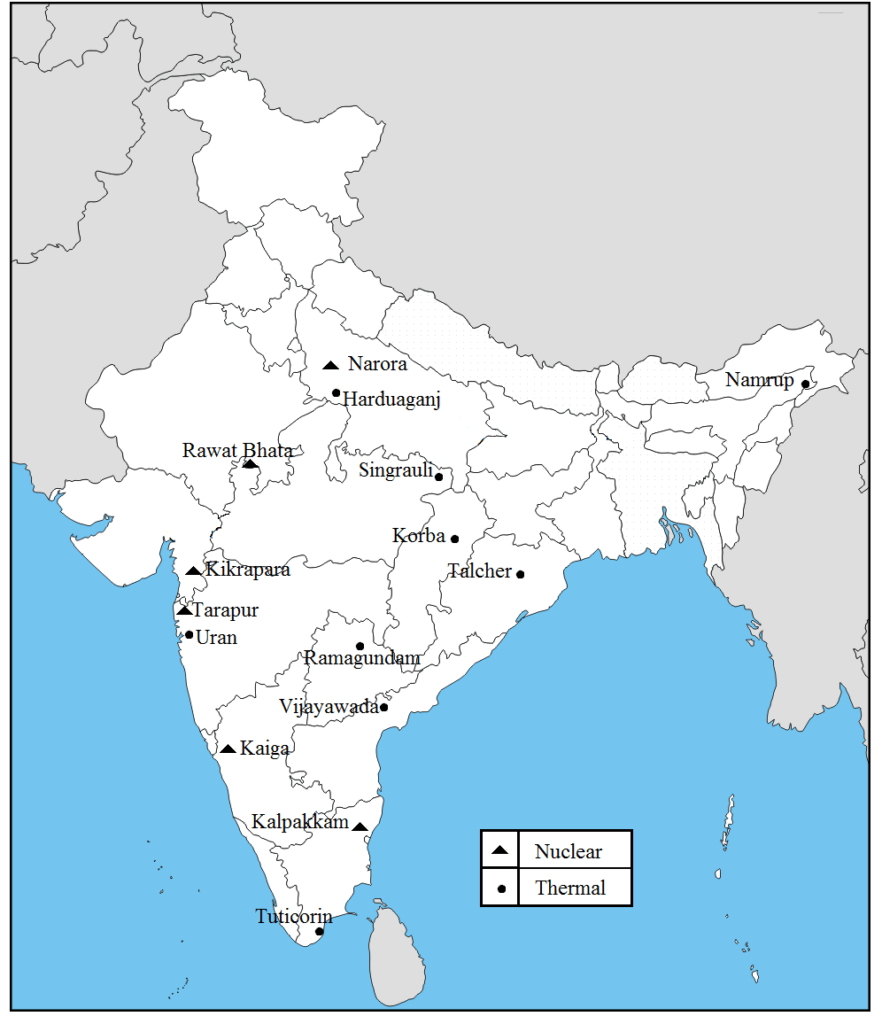
NCERT Solutions for Class 6th SSt
- Chapter 1
NCERT Solutions for Class 10 Social Science History: India and the Contemporary World-II
| Chapter 1 The Rise of Nationalism in Europe |
| Chapter 2 Nationalism in India |
| Chapter 3 The Making of Global World |
| Chapter 4 The Age of Industrialisation |
| Chapter 5 Print Culture and the Modern World |
